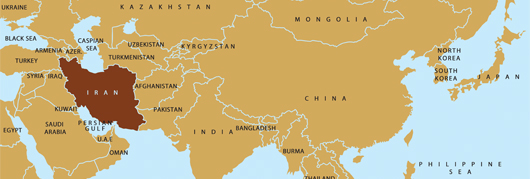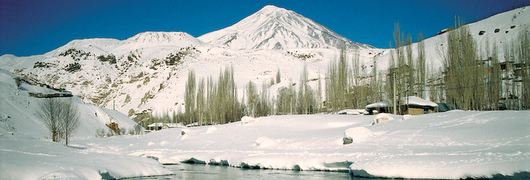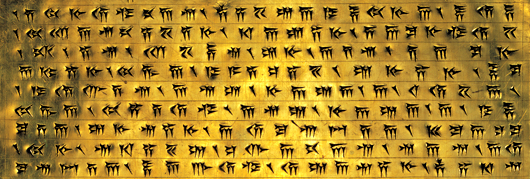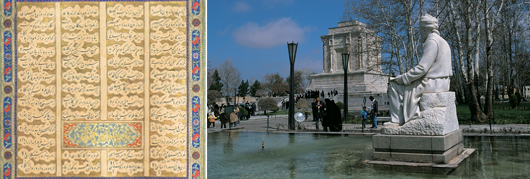Name of the
country: Islamic Republic of Iran
National Slogan: Independence, Freedom, Islamic Republic
Capital: Tehran
Geographical condition: 35 41 N 51 25 E
Capital: Tehran
Language: Persian
Religion: Islam
National Day: 11 February
Population (2011) : 75/597/633
Currency unit: Iranian Rial
Internet Domain: ir
International Tel code: 0098
Exports: oil, carpet, fruits, dry fruits (pistachios, raisins and dates),
leather, caviar, petrochemical products, apparels and dresses, foodstuffs.
Imports: machineries, industrial metals, medicines, chemical derivatives.
Industries: oil, petrochemical, textile, cement and other materials for building
construction, food derivatives (especially refining sugar and extracting edible
oil),
Agriculture: wheat, rice, grains, fruits, oily seeds such as pistachios, almond,
walnut, cotton.
Transportation: 7286 kilometers of railways and 158000 kilometers of roads.
Pipelines: oil derivatives 3900 kilometer, natural gas 4550 kilometer.
Ports: Abadan, Ahwaz, Shahid Beheshti port, Abbas port, Anzali port, Bushehr
port, Imam Khomeini port, Mahshahr port, Turkman port, Khoramshahr, Noshahr.

Iran is a county
in southwest Asian, country of mountains and deserts. Eastern Iran is dominated
by a high plateau, with large salt flats and vast sand deserts. The plateau is
surrounded by even higher mountains, including the Zagros to the west and the
Elburz to the north. Its neighbors are Turkmenistan, Azerbaijan and Armenia on
the north, Afghanistan and Pakistan on the east, and , and Turkey and Iraq on
the west.Tehran is the capital, the countrys largest city and the political,
cultural, commercial and industrial center of the nation. Iran holds an
important position in international energy security and world economy as a
result of its large reserves of petroleum and natural gas.
climate

The eastern and
central basins are arid, with less than 200 mm (7.9 in) of rain, and have
occasional deserts. Average summer temperatures exceed 38 °C (100.4 °F). The
coastal plains of the Persian Gulf and Gulf of Oman in southern Iran have mild
winters, and very humid and hot summers. The annual precipitation ranges from
135 to 355 mm (5.3 to 14.0 in).
History
Recent
archaeological studies indicate that as early as 10,000 BC, people lived on the
southern shores of the Caspian, one of the few regions of the world which
according to scientists escaped the Ice Age. They were probably the first men in
the history of mankind to engage in agriculture and animal husbandry.
Language
and literature

Official language
(of Iran) is Persian. Persian serves as a lingua franca in Iran and most
publications and broadcastings are in this language.
Next to Persian, there are many publications and broadcastings in other
relatively popular languages of Iran such as Azeri, Kurdish and even in less
popular ones such as Arabic and Armenian. Many languages originated in Iran, but
Persian is the most used language. Persian belongs to Iranian branch of the
Indo-European family of languages. The oldest records in Old Persian date to the
Achaemenid Empire, and examples of Old Persian have been found in present-day
Iran, Iraq, Turkey and Egypt.Persian is spoken today primarily in Iran,
Afghanistan and Tajikistan, but was historically a more widely understood
language in an area ranging from the Middle East to India, significant
populations of speakers in other Persian Gulf countries, as well as large
communities around the World.
Persian, until
recent centuries, was culturally and historically one of the most prominent
languages of the Middle East and regions beyond. For example, it was an
important language during the reign of the Moguls in Indian where knowledge of
Persian was cultivated and encouraged; its use in the courts of Mogul India
ended in 1837, banned by officials of the East Indian Company (British
Colonialism).the courts of Mogul India ended in 1837, banned by officials of the
East Indian Company (British Colonialism).
Persian scholars
were prominent in both Turkish and Indian courts during the fifteenth to
eighteenth centuries in composing dictionaries and grammatical works. A Persian
Indian vernacular developed and many colonial British officers learned their
Persian from Indian scribes.
The name of the modern Persian language is sometimes mentioned as Farsi in
English texts.

Human beings are
members of a whole, In creation of one essence and soul. If one member is
afflicted with pain, Other members uneasy will remain. If you have no sympathy
for human pain, The name of human you cannot retain. These verses by great
Iranian poet Sa’di is written in entrance to the Hall of Nations of the UN
building in New York.
We can distinguish two periods of Persian poetry: one traditional, from the
tenth to nearly mid, twentieth century; the other modernist, from about World
War II to the present. Within the long period of traditional poetry, however,
four periods can be traced, each marked by a distinct stylistic development. The
first of these, comprising roughly the tenth to the twelfth century, is
characterized by a strong and an exalted style (sabk-e fakher).
One may define
this style (generally known as Khorasani, from the association of most of its
earlier representatives with Greater Khorasan) by its lofty diction, dignified
tone, and highly literate language. The second, from the thirteenth to the
fifteenth century, is marked by the prominence of lyric poetry, the consequent
development of the ghazal into the most significant verse form, and the
diffusion of mystical thought. Its style is generally dubbed Eraqi because of
the association of some of its earlier exponents with central and western Persia
(even though its two major representatives, Sadi and Hafez, were from the
southern province of Fars); it is known by its lyric quality, tenderness of
feeling, mellifluous meters, and the relative simplicity of its language.
With Ferdowsis
immortal poem, the Shah-nama, epic poetry rose to the height of its achievement
almost at its beginning. Hailed as the greatest monument of Persian language and
one of the major world epics, it consists of some fifty thousand couplets
relating the history of the Iranian nation in myth, legend, and fact, from the
beginning of the world to the fall of the Sassanian Empire. Ferdowsi, who
belonged to the landed gentry (dehqan) and was well versed in Iranian cultural
heritage and lore, fully understood the sense and direction of the work he was
versifying. His approximately thirty years of labor produced a magnificent epic
of tremendous impact.
The culmination of
Persian lyric poetry was reached about a hundred years after Sadi with Hafez,
the most delicate and most popular of Persian poets. His ghazals are typical in
their content and motifs but exceptional in their combination of noble
sentiments, powerful expression elegance of diction and felicity of imagery. His
world-view encompasses many Gnostic, mystical, and stoic sentiments, which were
the common cultural heritage of his age.While Hafezs satirical lines against
pretense and hypocrisy lend a biting edge to his lyrics, his philosophical
outlook and Gnostic longings impart an exalted air of wisdom and detachment to
his poems. But he is above all a poet of love who celebrates in his ghazals the
glory of human beauty and the passion of love.
It not only
dispensed with the necessity of rhyme and consistent meter, but it also rejected
the imagery of traditional poetry and departed noticeably from its mode of
expression. Nima Yushij (1897-1960), the father of modernist poetry,and writing
free verse. by the late 1950s it had become the dominant mode of avant-garde
Persian poetry. Most of the contemporary literary movements in the West, from
the Symbolist to Imagist schools, have found exponents among modernist Persian
poets. In modernist poetry, all formal canons, thematic and imagistic
conventions, as well as mystical dimensions of the traditional school are by and
large abandoned, and the poets feel free to adapt the form of their poems to the
requirements of their individual tastes and artistic outlooks.
Iranian Calendar
Iranian official
calendar, regulate according to Solar year & Iranian months.21 March, equal 1
Farvardin, is beginning of Iranian New Year. Also in Iran, Lunar calendar
announce officially. Lunar year is 10 days less than Solar year ,so days of
performing religious rites, that adjust according Lunar calendar, each year is
different from next & former years. Therefore it recommended to tourists that
arrange their proper traveling time with related agency. Especially in Ramadan
month that Muslim Iranian, are fasting and in Muharram are mournful, so these
situations influence on daily and current activities and some days in these
two month are public holidays. Friday is official holiday.
Culture
Iranian culture has long been a predominant culture of the Middle East and
Central Asia, with Persian considered the language of intellectuals during much
of the 2nd millennium, and the language of religion and the populace before
that. The Sassanid influence carried forward to the Islamic world.Much of what
later became known as Islamic learning, such as philology, literature,
jurisprudence, philosophy, medicine, architecture and the sciences were based on
some of the practices taken from the Sassanid Persians to the broader Muslim
world
Source: http://en.mfa.ir/index.aspx?fkeyid=&siteid=3&pageid=2140